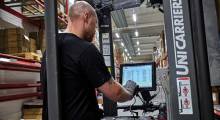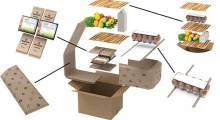With the tremendous uptick in e-commerce, fulfillment operations are struggling to match the best-sized shipping carton to an order’s contents to minimize the dimensional weight (dim weight) shipping charges assessed by UPS and FedEx. To simplify that decision-making process, on-demand box-making machinery—like the equipment offered by Box on Demand—can be outfitted with many dimensioning technologies, says Rick Morse, vice president of sales and marketing.
“Many online retailers, within their current fulfillment process, either do or do not have product dimensional data in their inventory management system,” he explains. “If they have captured the length, width and height of each item, it’s easy to send dimensional information about the single or multiple items within an order to our machinery.”
For companies that haven’t captured product dimensions, aren’t confident in the accuracy of the data that has been collected, or are unwilling to dedicate the resources required to maintain the information, Morse suggests adding a dimensioning system at the point of cartonization.
“We offer a scanning table for our box-making machinery that captures the dimensions of a single or multiple item order very quickly, then routes that information to the machine,” he says. “The information can also be added to the inventory management system as a means to build a dimensional database.”
Based on the dimensional data (whether previously stored or freshly captured), the box-making equipment’s software algorithm quickly calculates the optimum box size required. “The system can be set up to indicate that a particular order will fit into a specific box size already in stock, or recommend if a custom box should be made instead,” Morse adds.
With the high volumes associated with online sales, Morse says hybrid packing systems that incorporate a mix of on-demand box-making equipment and a selection of standard box sizes have become a common solution.
“For companies handling up to 50,000 orders per day, the ability to send the order’s dimensional data and have the correct box size calculated in milliseconds is a tremendous time and money saver,” he explains. That’s because even though a dimensional scan prior to cartonization adds a few seconds to packaging time, it eliminates the guesswork required of an operator to pick a box.








